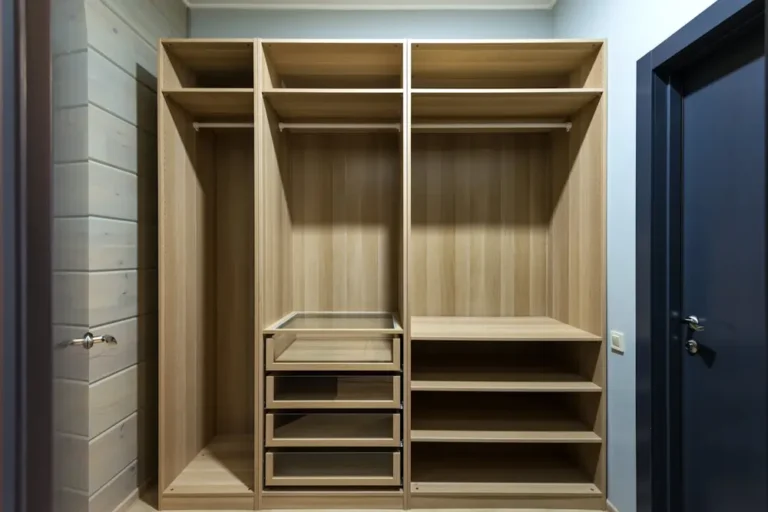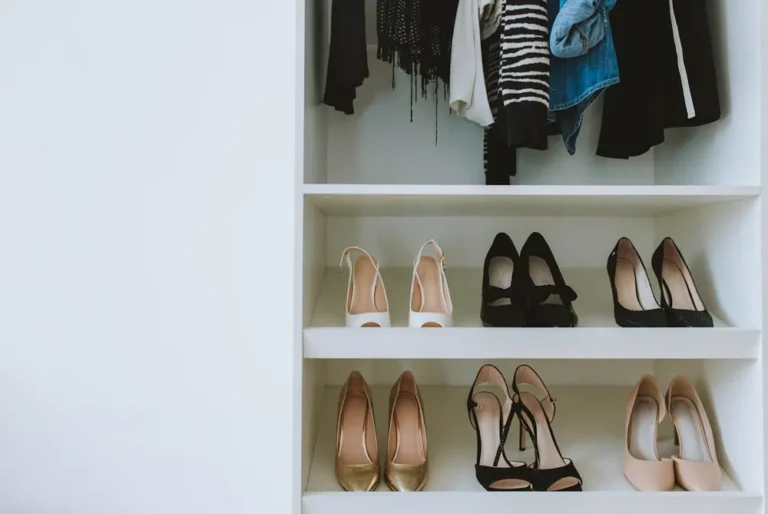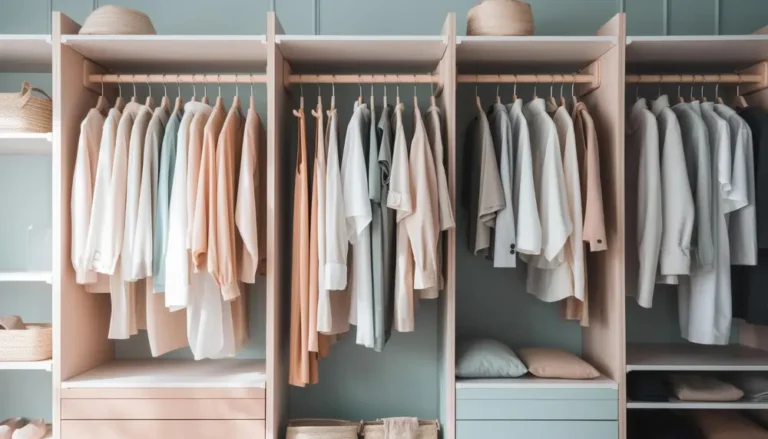Are you feeling overwhelmed by clutter? You’re not alone. In 2024, many of us are still grappling with the aftermath of pandemic-related accumulation and changing lifestyles. But don’t worry – this guide will show you how to start decluttering when overwhelmed, breaking down the process into manageable steps. By the end, you’ll have a clear plan to transform your space and mindset. Let’s dive in!
How to Start Decluttering When Overwhelmed
Feeling overwhelmed by clutter is more common than you might think—especially when the mess just seems too big to tackle! Have you ever looked around and felt paralyzed, unsure where to even begin? Trust me, you’re not alone. Studies show that clutter can increase stress and anxiety, making it harder to focus or relax in your own home. But don’t worry! You don’t have to conquer everything at once. In this guide, I’ll share how to break down the process into small, manageable steps that anyone can follow, no matter how daunting the mess seems. Let’s take it one step at a time and bring some calm back into your space.
Acknowledge the Overwhelm: Why It’s OK to Feel Stuck
Hey, it’s totally fine to feel stuck when decluttering your home. If you don’t know where to start, try tackling one room or even a small area first. Decluttering when you feel overwhelmed can be tough, but starting with a small space makes it less overwhelming.
Think about decluttering your home like a chore that you can break down into simple steps. Begin by clearing out a single cupboard or drawer. You’ll find that you’re making progress, even if it’s just a little bit at a time. Decluttering can be overwhelming, but don’t let that stop you.
When you’re struggling with too much stuff, focus on things that don’t belong. Recycling items you no longer need can help you feel accomplished. Remember, a minimalist approach doesn’t mean getting rid of everything, just the things that don’t serve you anymore.
Recognize the mental block: Understanding why clutter causes stress.
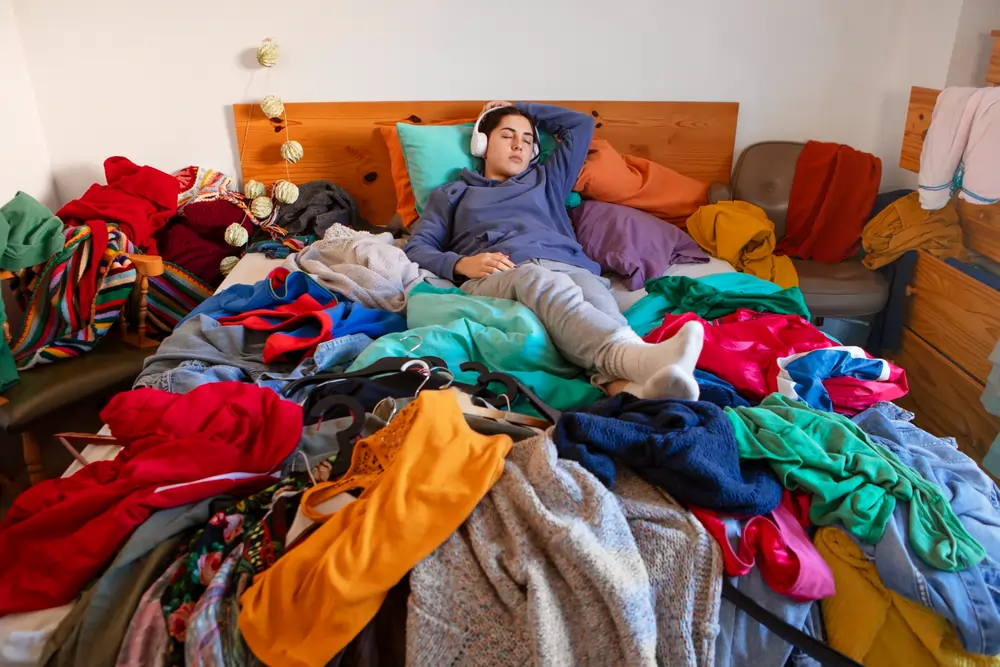 Clutter isn’t just a physical problem – it’s a mental one too. Studies show that a cluttered environment can increase cortisol levels, the hormone associated with stress. This creates a vicious cycle: the more stressed we feel, the harder it becomes to tackle the clutter.
Clutter isn’t just a physical problem – it’s a mental one too. Studies show that a cluttered environment can increase cortisol levels, the hormone associated with stress. This creates a vicious cycle: the more stressed we feel, the harder it becomes to tackle the clutter.
Overcoming paralysis: Simple mindset shifts to help you move forward.
The key to breaking this cycle is to start small. Instead of thinking, “I have to declutter my entire house,” try, “I’m going to spend 15 minutes organizing this drawer.” This shift in perspective can make all the difference.
Celebrate small wins: Why even a little progress is worth it.
Remember, every item you declutter is a step forward. Celebrating these small victories can boost your motivation and keep you going.
Start Small: Choose a Manageable Space
Feeling the overwhelm of clutter in your home? Don’t worry, I’ve got some best tips for you! Instead of trying to declutter your whole house at once, start small with one small area. Maybe you want to tackle an entire room, but trust me, you’ll never finish if you throw everything out at once. Just declutter one spot and build momentum to keep going.
When you start decluttering, pick a manageable space and decide what stays and what goes. This way, you won’t get distracted by the feeling of overwhelm. Not sure how to start? Ask yourself some decluttering questions about the things you want and the things that need to go. This will help you decide what you really think you need.
If you’re still struggling, working with a professional can make decluttering easier. A professional organizer can give you practical tips and help you get so much done. If you hire a professional, they can help you figure out the time to complete each task and make sure your space stays decluttered. Keep reading for more advice and you’ll know exactly how to make your space feel fresh and organized!
Why starting with a drawer or surface matters: The psychology of small tasks.
Starting small is crucial when you’re overwhelmed by clutter. Tackling a drawer or countertop gives you a quick win, which can fuel your motivation to keep going. It’s like lighting a spark that can grow into a decluttering fire!
Use the ’15-minute rule’: How short bursts of decluttering can create momentum.
 Set a timer for just 15 minutes. You’ll be amazed at how much you can accomplish in this short time. This technique helps overcome the initial resistance to starting, which is often the biggest hurdle.
Set a timer for just 15 minutes. You’ll be amazed at how much you can accomplish in this short time. This technique helps overcome the initial resistance to starting, which is often the biggest hurdle.
Clear a visible area first: The power of seeing immediate results.
Choose an area you see often, like your kitchen counter or entryway table. The visual impact of a cleared space can be incredibly motivating. You’ll want to keep that tidy feeling going!
The One Box Method: Simplify Sorting
Feeling overwhelmed by your space and don’t know how to start? The One Box Method can help you declutter your home without feeling stressed. Start with one drawer, one shelf, or even a plastic storage bin. Take tiny steps and break the whole project into manageable sections.
When you’re ready to start decluttering, set a timer for 20 minutes and focus on one room at a time. Use a laundry basket to gather unwanted items and donate items that are difficult to dispose. Don’t overthink it; just make decisions quickly and put things away.
If you’re looking for more tips, check out these 8 tips to help you declutter. It’s a great way to tackle an overwhelming space and eventually achieve a clutter-free home. Once you’ve done this, you’ll feel so much better about your space. You can even sell some items on Facebook Marketplace!
Sort into categories: Keep, toss, donate, and undecided.
This method is a cornerstone of easy decluttering tips. Use boxes or bags labeled with these categories. It simplifies decision-making and keeps you focused.
Set aside a ‘maybe’ box: How to handle items you’re unsure about.
For things you’re on the fence about, use a “maybe” box. Revisit it in a month – if you haven’t needed or thought about the items, it’s probably safe to let them go.
Create an out-of-sight storage spot: Tips for dealing with sentimental clutter.
Sentimental items can be the toughest to part with. Create a special box for these treasures, but be selective. Remember, it’s the memories that matter, not necessarily the objects.
Set a Decluttering Schedule: Stay Consistent
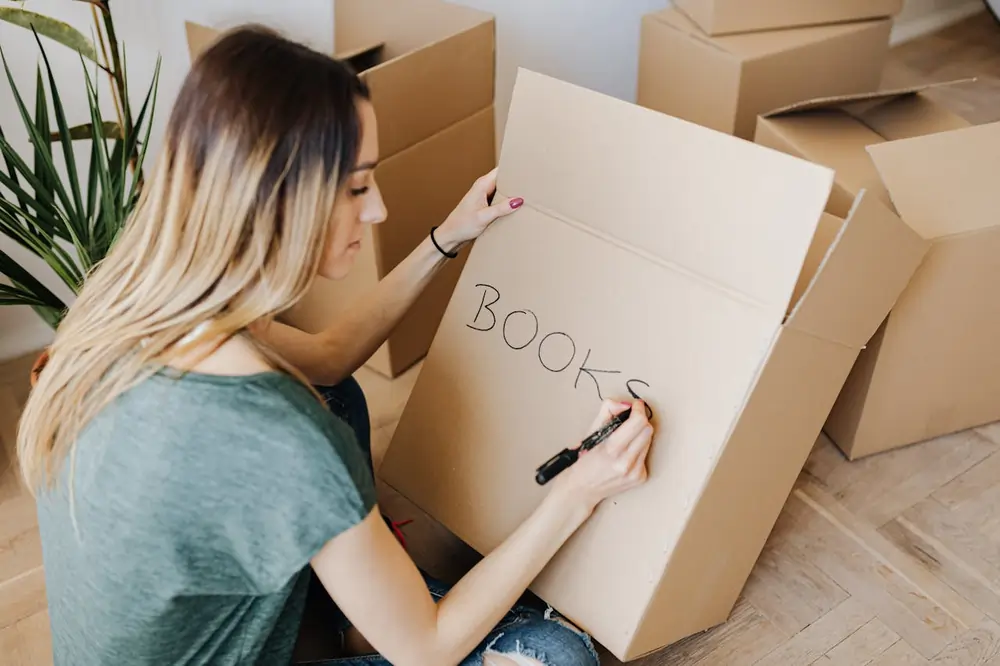 Ever feel overwhelmed by all the stuff you have? It’s a good idea to start decluttering when you feel motivated. Add it to your to-do list and try to stay consistent. You might like to put on some music to make it more fun and less of a chore.
Ever feel overwhelmed by all the stuff you have? It’s a good idea to start decluttering when you feel motivated. Add it to your to-do list and try to stay consistent. You might like to put on some music to make it more fun and less of a chore.
Daily or weekly sessions: How to create a routine that sticks.
Consistency is key in the decluttering process. Whether it’s 15 minutes a day or an hour each weekend, stick to a schedule that works for you. This routine will become a habit before you know it!
Reward yourself for milestones: Motivation through mini-goals.
Set small, achievable goals and reward yourself when you reach them. Maybe it’s a coffee from your favorite shop after decluttering your closet or a movie night after tackling the garage.
Involve others if needed: The benefits of accountability or help from family.
Decluttering with family can make the process more fun and efficient. Plus, it ensures everyone is on board with keeping the space tidy.
Decluttering Essentials: Tools and Tips for Efficiency
Decluttering can be a game-changer! First, gather some basic tools like bins, labels, and trash bags. Next, sort your stuff into keep, donate, and toss piles. It might seem overwhelming, but you’ll feel so much lighter once it’s done. Plus, your space will look amazing!
Must-have tools: Bags, boxes, labels, and a timer.
 Having the right decluttering tools on hand makes the process smoother. Don’t forget a good marker for labeling and trash bags for items to discard.
Having the right decluttering tools on hand makes the process smoother. Don’t forget a good marker for labeling and trash bags for items to discard.
Use a checklist: Breaking down tasks to prevent overwhelm.
A decluttering checklist can be a game-changer. It breaks the process into manageable steps and gives you a sense of progress as you tick off each item.
Digital decluttering: Don’t forget your email and desktop clutter!
In 2024, digital clutter can be just as overwhelming as physical clutter. Set aside time to organize your files, unsubscribe from unnecessary emails, and clear your desktop.
Mental and Emotional Decluttering: It’s Not Just About Stuff
Mental and emotional decluttering is super important. It’s not just about getting rid of physical stuff, but also about clearing your mind and heart. When you let go of negative thoughts and feelings, you start to feel lighter and more at peace. So, take some time to declutter your mind!
Let go of guilt: Why holding onto things ‘just in case’ can be harmful.
Many of us keep items out of guilt or a vague sense that we might need them someday. But this “just in case” mentality can lead to unnecessary clutter and stress.
Mindfulness and minimalism: How decluttering helps mental clarity.
Mindfulness in decluttering isn’t just about getting rid of things – it’s about being intentional with what you keep. As you declutter, ask yourself: Does this item add value to my life?
Practice self-compassion: Give yourself grace throughout the process.
Remember, decluttering is a journey, not a destination. Be kind to yourself as you work through it. Celebrate your progress, no matter how small!
Putting It All Together: Your 2024 Decluttering Action Plan
Now that we’ve covered the essentials, let’s create a simple action plan to get you started:
- Choose your starting point: Pick a small, visible area that’s bothering you the most.
- Gather your tools: Boxes, bags, labels, and a timer.
- Set a 15-minute timer: Start sorting using the One Box Method.
- Make it a habit: Schedule regular decluttering sessions.
- Track your progress: Use a checklist to stay motivated.
- Celebrate your wins: Reward yourself for reaching milestones.
- Reflect and adjust: Regularly assess what’s working and what isn’t.
Remember, the goal isn’t perfection – it’s progress. By taking these small decluttering steps, you’re on your way to a more organized, peaceful home and mind.
Conclusion
Decluttering when you’re overwhelmed might feel impossible, but the key is to start small and stay consistent. Each drawer or shelf you clear is a victory, and as you make progress, you’ll start feeling lighter—both in your space and in your mind. Remember, decluttering is a journey, not a race. So take a breath, grab a box, and start today! You’ve got this. Have any other tips or success stories? Share them in the comments below!
As you embark on your decluttering journey, you might wonder: What unexpected benefits will you discover along the way? Will you find long-lost treasures? Will your relationships improve as you create more harmonious spaces? There’s only one way to find out – start decluttering today!
By following these simple decluttering strategies, you’re not just organizing your space; you’re paving the way for a clearer mind, reduced stress, and more time for what truly matters in your life. So, are you ready to take that first step towards a clutter-free 2024?

